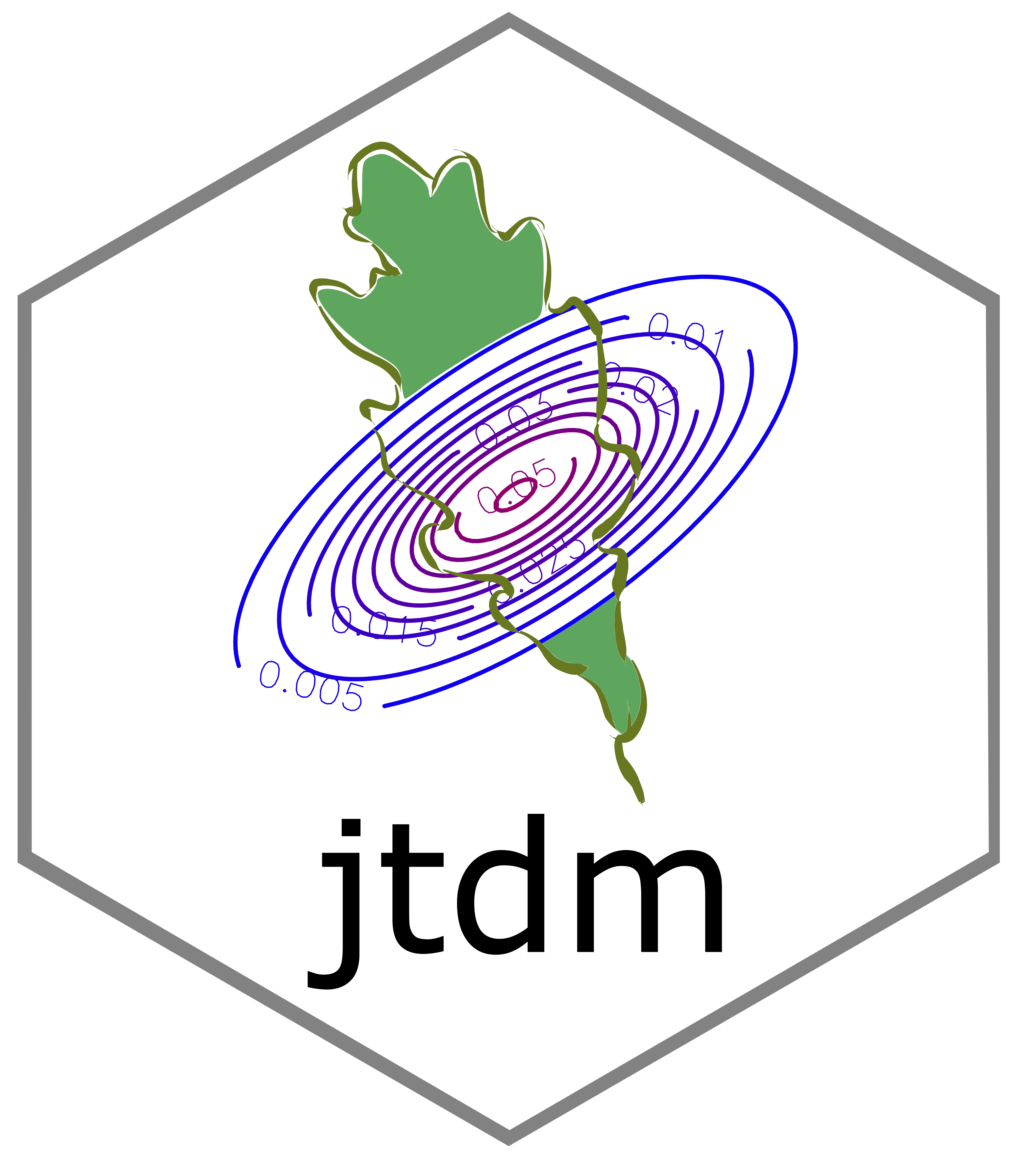
The hardware and bandwidth for this mirror is donated by dogado GmbH, the Webhosting and Full Service-Cloud Provider. Check out our Wordpress Tutorial.
If you wish to report a bug, or if you are interested in having us mirror your free-software or open-source project, please feel free to contact us at mirror[@]dogado.de.
Giovanni Poggiato 17/10/22

The package jtdm implements the method described in Poggiato et al. (2023) doi:10.1111/geb.13706. The code for producing the results of the paper is available in the subfolder publications in this repo.
## CRAN
#install.packages('jtdm', repos = "http://cran.us.r-project.org")
## Github
#library(devtools)
#install_github("giopogg/jtdm")
library(jtdm)The package implements jtdm by sampling from the posterior distribution of the parameters, which has been analytically determined. Therefore, there is no need for classical MCMC convergence checks.
Fitting a JTDM the case study dataset of Poggiato et al. In prep.
library(ggplot2)
set.seed(1712)
data(Y)
data(X)
# Short MCMC to obtain a fast example: results are unreliable !
m = jtdm_fit(Y = Y, X = X, formula = as.formula("~GDD+FDD+forest"), sample = 1000)
# Inferred parameters
getB(m)$Bmean
get_sigma(m)$Smean We can have a first look to regression coefficients using the
summary function
summary(m)And we can plot the regression coefficients and the residual covariance matrix
plot(m)
###Trait-environment relationships
Single-trait trait-environment relationships
partial_response(m, indexGradient="GDD", indexTrait="SLA",
FixX=list(GDD=NULL,FDD=NULL,forest=1))$p
Partial response curve of the most suitable community-level strategy and envelop of possible community-level strategies of SLA and LNC along the GDD gradient.
ellipse_plot(m,indexTrait = c("SLA","LNC"), indexGradient = "GDD")
Computes joint probabilities of both SLA and LNC to be greater than 20 in a high altitude site. This measures the relative suitability of communities where both SLA and LNC are higher than 20 in a high altitude site.
joint_trait_prob(m, indexTrait = c("SLA","LNC"), Xnew = X["VCHA_2940",],
bounds = list(c(20,Inf), c(20,Inf)), FullPost = TRUE)$PROBmean
## 1
## 0.09809922Unsurprisingly, the probability is low. Then, we compute how this probability varies along the GDD gradient.
joint=joint_trait_prob_gradient(m,indexTrait=c("SLA","LNC"),
indexGradient="GDD",
bounds=list(c(mean(Y[,"SLA"]),Inf),c(mean(Y[,"SLA"]),Inf)),
FullPost = TRUE)And we plot it.
## Warning: Using `size` aesthetic for lines was deprecated in ggplot2 3.4.0.
## ℹ Please use `linewidth` instead.
## This warning is displayed once every 8 hours.
## Call `lifecycle::last_lifecycle_warnings()` to see where this warning was
## generated.
As climatic conditions become more favorable (i.e. GDD increases), the probability of having high values of both traits increases.
This package is currently developed by Giovanni Poggiato from Laboratoire d’Ecologie Alpine. It is supported by the ANR GAMBAS. The framework implemented in this package is described in: Joint modeling and predictions of community traits. Poggiato Giovanni, Gaüzere Pierre, Martinez Almoyna Camille, Deschamps Gabrielle, Renaud Julien, Violle Cyrille, Münkemüller Tamara, Thuiller Wilfried. In preparation.
These binaries (installable software) and packages are in development.
They may not be fully stable and should be used with caution. We make no claims about them.
Health stats visible at Monitor.